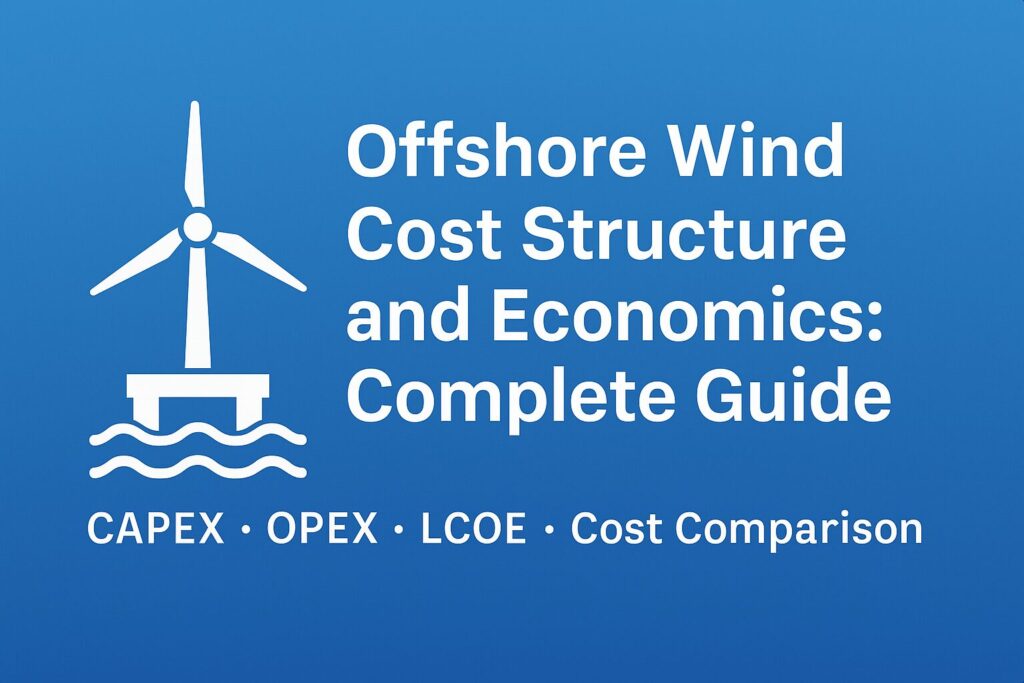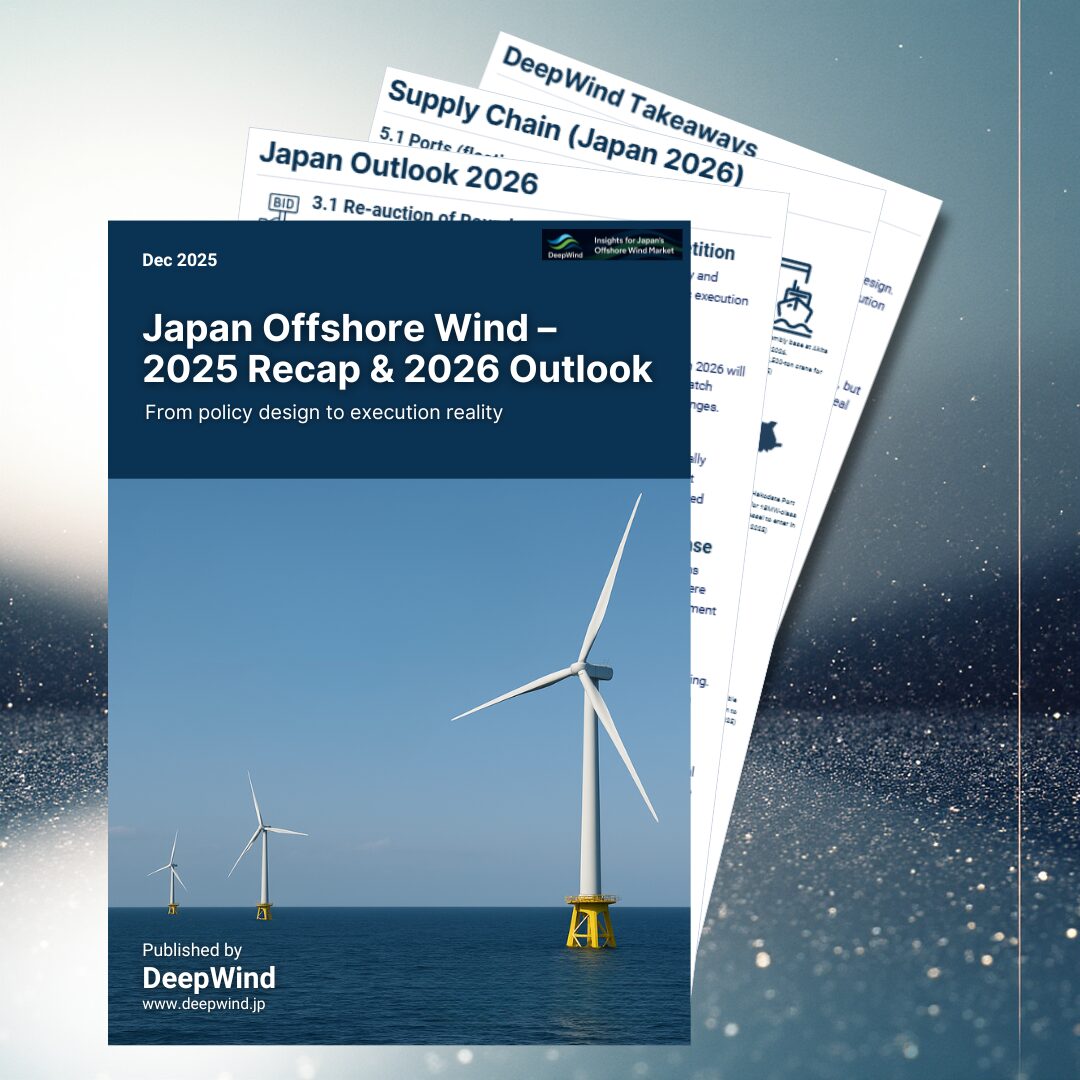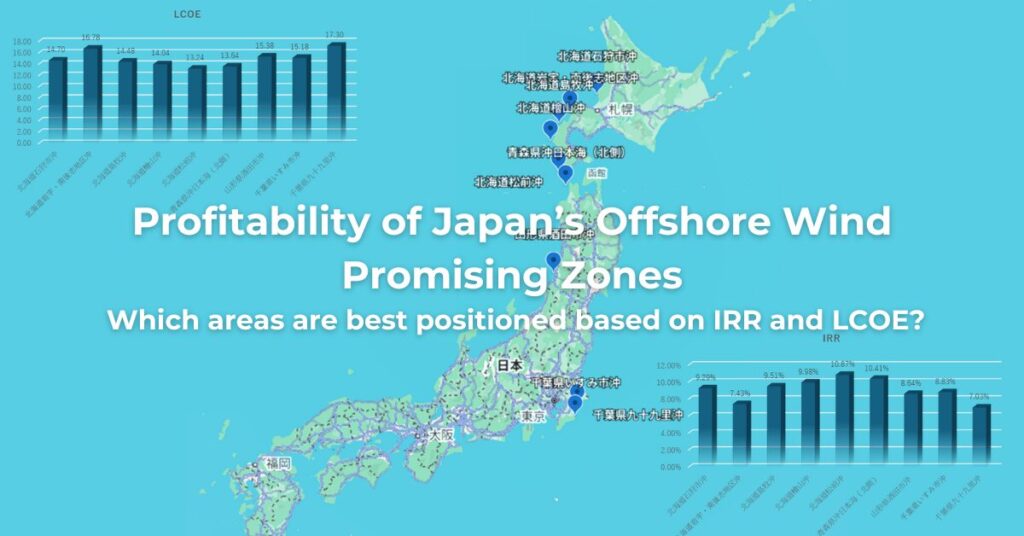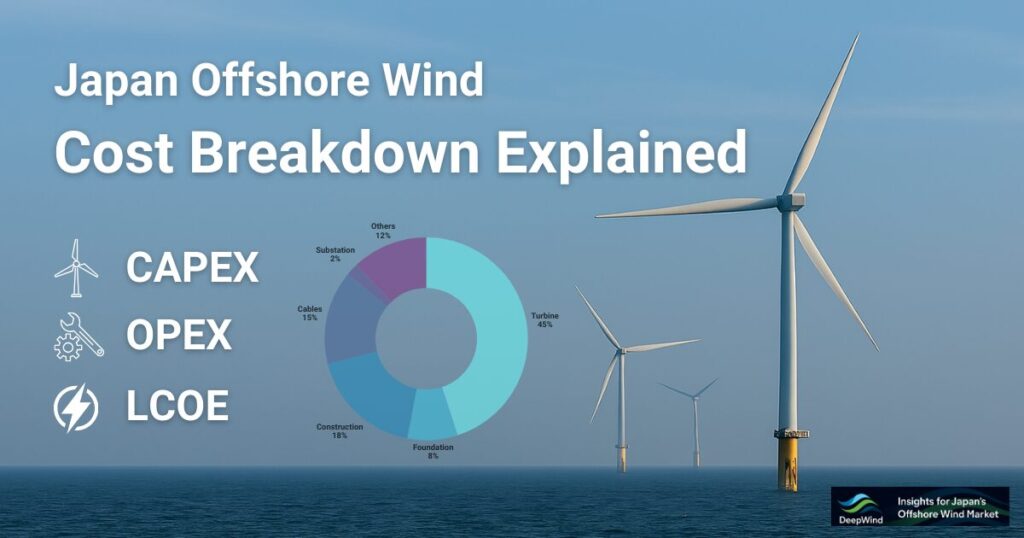Introduction
Offshore wind power is expanding rapidly worldwide, but its economics are largely shaped by its cost structure. This article provides a comprehensive overview of the global cost structure and economics of offshore wind power. We explain the differences between fixed-bottom and floating technologies, cost comparisons by foundation type, and the cost competitiveness of Europe and Japan, all in a clear and accessible manner.
1. Offshore Wind Cost Structure
1-1. CAPEX (Capital Expenditure)
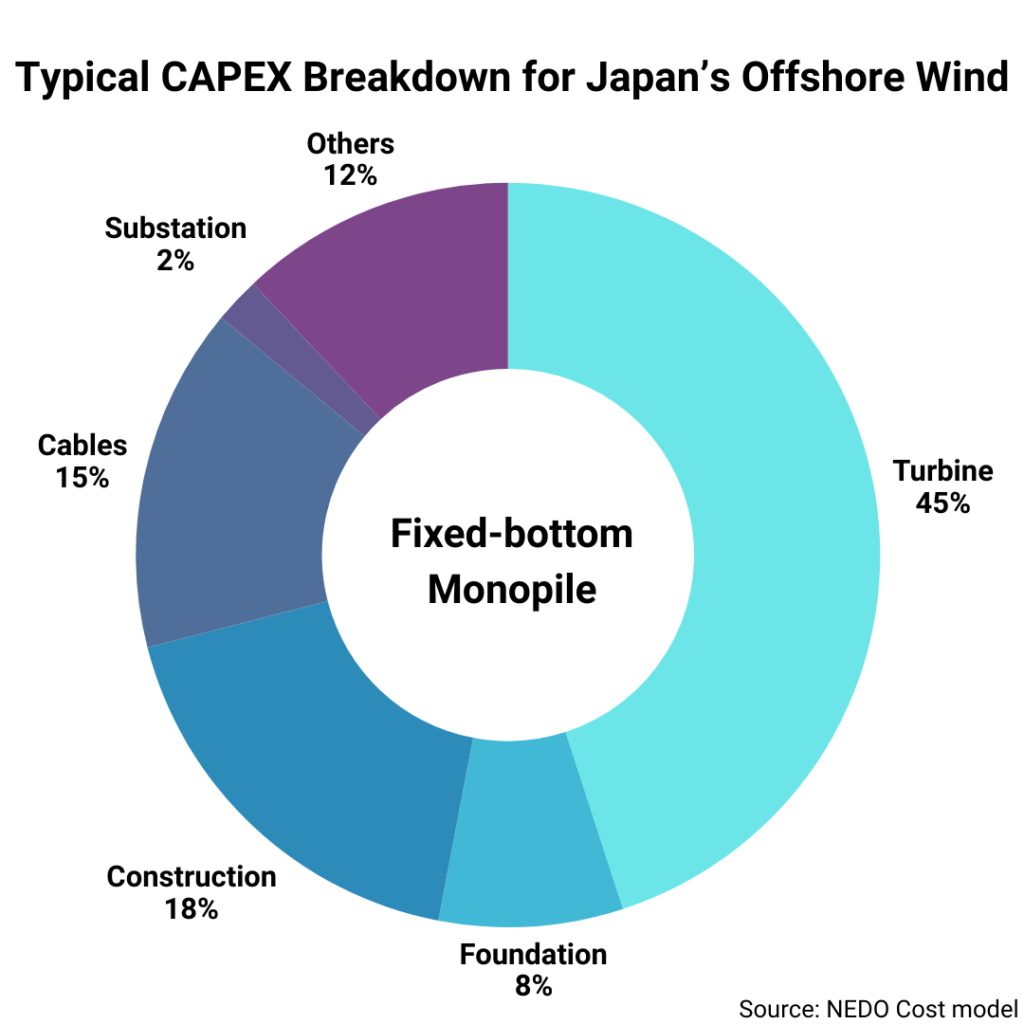
CAPEX accounts for the majority of offshore wind project costs, covering turbines, floating platforms, and grid connection infrastructure.
- Turbine equipment: nacelle, blades, tower
- Foundation structures:
- Fixed-bottom: monopiles or jackets
- Floating: semisubmersibles, spars, or other floating platforms
- Subsea cables and substations
- Installation and transportation costs: require specialized vessels and port infrastructure
➡ Related article: Floating Offshore Wind Cost Structure & The Reality of LCOE | Detailed CAPEX/OPEX Breakdown
1-2. OPEX (Operational Expenditure)
Once operational, offshore wind farms incur OPEX costs for ongoing maintenance and management. Floating wind typically has higher O&M costs due to accessibility challenges.
- Scheduled inspections and maintenance
- Operations and management (O&M)
- Repairs and spare parts
➡ Related article: Why Floating Offshore Wind Power Is the Game-Changer: Unlocking Japan’s Deep-Water Potential
2. Understanding LCOE (Levelized Cost of Energy)
LCOE measures the average cost per megawatt-hour of electricity generated over the project lifetime. Offshore wind LCOE has declined globally due to larger turbines and economies of scale.
➡ Related article: Which areas are best positioned based on IRR and LCOE?
3. Fixed-Bottom vs Floating: Technology Cost Comparison
- Fixed-bottom: lower costs in shallow waters with simpler foundations
- Floating: higher CAPEX due to floating structures and mooring systems but allows installation in deep waters
➡ Related article: Floating Common Platform Development
4. Europe vs Japan: Cost Comparison
European markets benefit from mature supply chains and port infrastructure, resulting in lower costs. Japan faces higher costs due to typhoon resilience requirements, deep waters, and limited local supply chains.
➡ For detailed Japan market insights, visit: Offshore Wind Costs and Economics in Japan
5. Future Cost Reduction Drivers
- Localization of supply chains
- Larger turbines and technological innovation
- Government policies such as competitive auctions and subsidies
➡ Related article: Japan’s Central Method: Enhancing Project Efficiency
6. PPA and Corporate PPA
As a key factor influencing the business viability of offshore wind, the mechanism of PPAs (Power Purchase Agreements) has been gaining increasing attention in recent years. In particular, corporate PPAs, in which companies and power producers enter into direct contracts, are expected to become more widespread as they contribute to electricity price stability and improved investment returns.
The following article provides an in-depth explanation of the fundamentals of PPAs and corporate PPAs in Japan, recent developments, and their impact on the expansion of renewable energy.
➡ Related article: What is a PPA and Corporate PPA? The Power Procurement Contracts
7. Cost Structure of Promotion Area Projects (12 Sites)
This pillar article provides a comprehensive comparison of Japan’s 12 offshore wind promotion zones designated under the Renewable Energy Sea Area Act. Using key cost and performance indicators—CAPEX, OPEX, LCOE, and IRR—we evaluate and rank each zone on a star scale for investment attractiveness.
➡ Related article: Comprehensive Cost Analysis of Japan’s 12 Offshore Wind Promotion Zones
What is CAPEX?
CAPEX (Capital Expenditure) refers to the upfront investment required to build an offshore wind project. It includes turbines, foundations, transmission systems, and construction costs, usually incurred as a one-time large expense.
What is OPEX?
OPEX (Operational Expenditure) refers to the ongoing annual costs after a project begins operation. It covers maintenance, insurance, port fees, and other operating expenses that affect long-term project economics.
What is LCOE?
LCOE (Levelized Cost of Energy) is the average cost of electricity generated over the lifetime of a project. It includes both CAPEX and OPEX, and serves as a key benchmark to compare the competitiveness of renewable energy sources.
Summary
Global offshore wind costs are decreasing, but Japan faces unique challenges. Understanding cost structures and foundation technology differences is essential to improving economic viability and competitiveness.
Explore more categories at DeepWind:
- 🔍Market Insights – Understand the latest trends and key topics in Japan’s offshore wind market
- 🏛️Policy & Regulations – Explore Japan’s legal frameworks, auction systems, and designated promotion zones.
- 🌊Projects – Get an overview of offshore wind projects across Japan’s coastal regions.
- 🛠️Technology & Innovation – Discover the latest technologies and innovations shaping Japan’s offshore wind sector.
- 💡Cost Analysis – Dive into Japan-specific LCOE insights and offshore wind cost structures.
